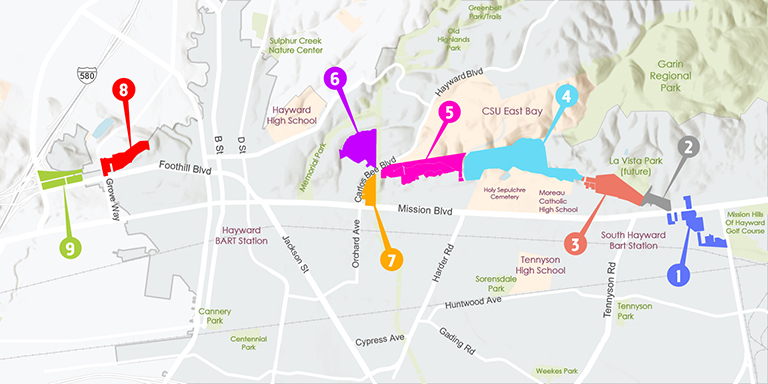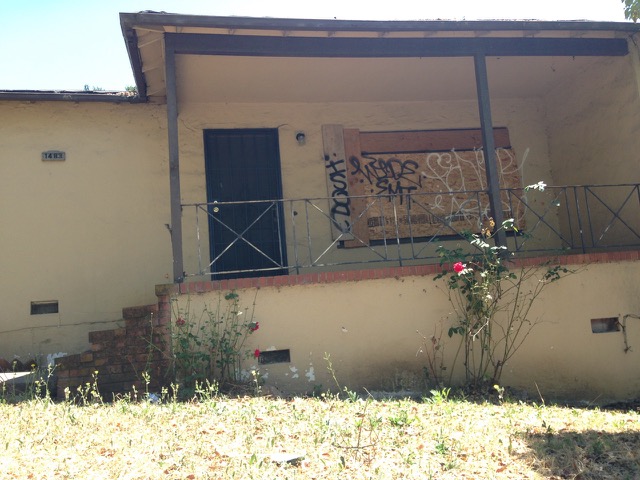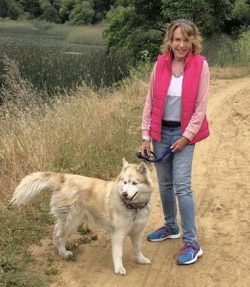Foothill freeway. We could really use it. Family lived on Del Mar off mission/central Blvd.
Had a garden with everything on caltrans property. Just build the freeway already!!!
A freeway would run through it: Reflecting on the history of the 238 parcels and who decides their future
- By : Ann Maris
- Category : Alameda County, Featured Story, Headline Story
- Tags: alameda county, Caltrans, castro valley, Hayward, housing

Over 50 years ago, the State of California “purchased more than 400 parcels of property for construction of a 14-mile 238 Corridor Bypass Freeway to run through the City of Hayward and parts of unincorporated Alameda County.”
Many people fought the project since its inception in 1961. Sustained activism and lawsuits resulted in a 2004 decision halting the project.
While the status of the project was litigated, Caltrans rented out the homes it had purchased, initially to low-income families, and later at market rate. Some buildings and lots were used for open space or community services. But Caltrans was a poor property manager, allowing homes and neighborhoods to decline into disrepair. Buildings were not re-rented and left abandoned, many surrounded in chain link fences.
With the legal issues settled and the 238 freeway extension abandoned, Caltrans began selling off the properties to current tenants, at auction, or to Hayward and Alameda County, who now are selling them to other developers. But no post-238 plan was ever made to restore the neighborhoods, and the public has not been allowed to participate in meaningful decisions. It is not yet clear what these public lands will become and neighbors need a balanced plan that provides local benefits, such as affordable housing and open space trails that both support local wildlife habitat and connect neighbors to retail, recreation and community.
History of the Caltrans 238 Neighborhoods

I realize we are just the current breath in a long, wide, and deep contingency of residents who have fought for this Caltrans 238 land. But whom are we fighting?
They fought; they died. I sit these days and write the same letters they wrote decades ago. We have been fighting for a long time now. I was so young then, when they were old that I didn’t even know what was going on. But I look through the public records and hundreds of letters and comments. I read their struggles, their hopes, their words, and I feel their disappointment and loss. Over and over, they fought for information and to be heard by those making the decisions. Many people who live here care about this land.
George Godinez was one. He lived on Ruby Meadow, at 1418 A Street, Castro Valley, in a historic 1893 building on a large lot. There were several hundred-year-old buildings in the path of the proposed 238 freeway. In the early 1990s, George complained to the Hayward Council that Castro Valley residents could not vote on the 238 freeway. I guess the freeway was always Hayward’s baby. Out of the cancelled freeway came that dreaded Hayward Loop.
George attended the meetings and asked Hayward and Caltrans for information about the freeway plans that never came, and he asked again and again. He often complained to Caltrans about maintenance problems with his historic house. I’m not sure where he came from but I know he was passionate about his neighborhood and its future. George died in his Caltrans home when it caught fire one night while he was sleeping.
Besides his imprint in the public records, George was written about in two books that I know of: one book that documents the failed 238 project, and one autobiography about a Filipino activist who was once George’s Caltrans rental agent. He writes that he expected a big surly guy by his letters and pushy reputation in the office, but was surprised when they first met to discover George was thin and kind. They had a mutually respectful relationship that was significant in the activist’s personal development. The author also has passed on.
Strangely enough, while I was researching information about George, I discovered another man had died in the same home a few decades earlier. Maurice D. Bejach was a high school science teacher who also taught math and philosophy. He moved to the Bay area in 1929 and retired from teaching in 1947. He was a Mason and an active volunteer. In 1968, he passed away at home after a brief illness. It may have been fortunate timing because he didn’t have to see what Caltrans did to his neighborhood. Most homes were purchased by Caltrans between 1967-1972. I moved to California from Pennsylvania in 1972. It was quite a different Bay then.

My mom is a third generation California native, but I happened to be born in Germany. However, I grew up here, living at three different addresses on Grove Way, with the final home being a Caltrans rental in 1976. When I was 13, we lost the dirt hill we played on and the A/C Flea Market because 509 Mesa Verde Condos were built. I had a big crush on the contractor’s son. My mom remained in the home as her kids went off to college, started a family, and joined the Navy. She was a teacher but retired from the Hayward Library. Tenants like my mom stayed because they were promised the chance to eventually buy their rentals. But we never knew if we could plant a tree or would be evicted for the freeway. It was up and down and always felt tenuous.
Our neighbors behind us were already tenants when Caltrans bought their home, so they just switched landlords. Two sons were born to our good friend and neighbor, and now her grandson goes to the public meetings. My good friend died in her home two years ago of pancreatic cancer. She was my buddy and we fought hard for the right to buy our homes. We gardened together and walked our dogs on the land. I miss her all the time, and have met several other good women and men who fight with me now.
But whom are we fighting? Why should it be a fight? Doesn’t the government exist for our benefit? The people ignoring us and the pleas for our neighborhood are paid workers, who see only technical words on paper and not the lives who live here, and lived here, and will live here. Many have never even walked the earth here. Others just don’t care. If we read the sensible General Plans, if we read the pretty resolutions by council, if we read the Brown Act, one might think or believe our voices matter. But the dark sludge of reality smears our historical archives with unheard voices. Words only mean something to those we fight when the weight of development dollars supports them. Others words are ignored, like the fall leaves from a tree, softly piling up on the ground, and then swept away.


